Long duration M2.9 solar flare erupts from Region 2403
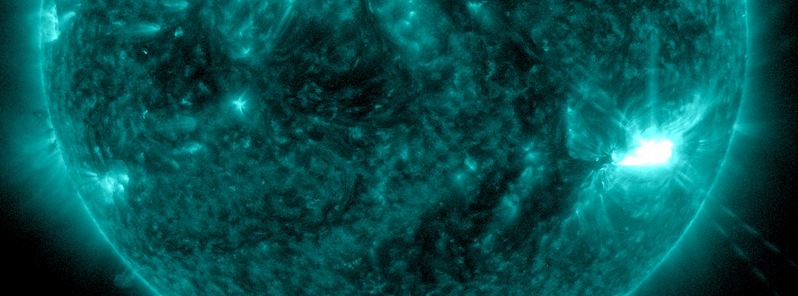
A moderately strong solar flare measuring M2.9 at its peak time erupted from Region 2403 on August 27, 2015. This was a long duration flare; the event started at 04:48, peaked at 05:44 and ended at 06:03 UTC.
There were no associated radio signatures that would suggest a Coronal Mass Ejection (CME) was produced.
Today's M2.9 is 9th M-class solar flare from Region 2403 since it rotated onto the Earth side of the Sun. The region is undergoing slow decay but maintains its Beta-Gamma-Delta magnetic configuration and still harbors energy for strong eruptions on the Sun. Earth-directed CMEs are still possible.
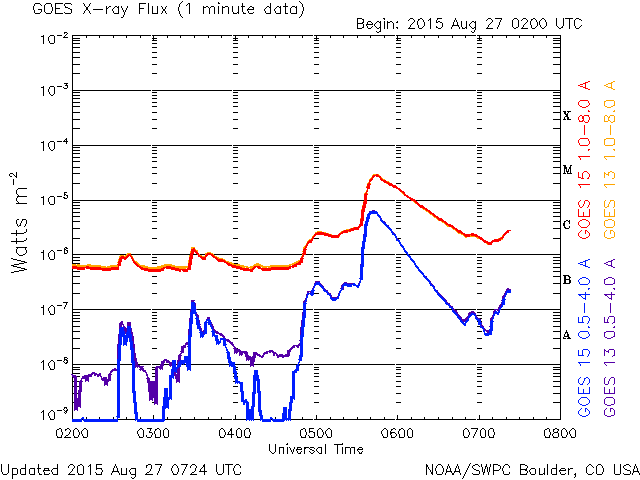
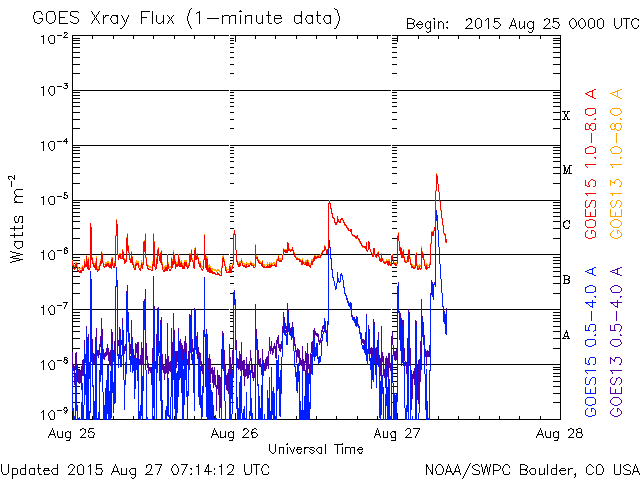
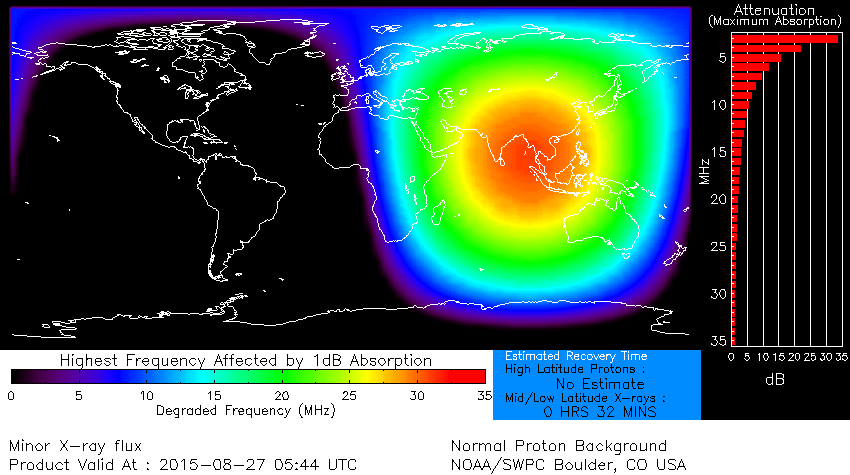
Solar activity is expected to remain at low levels, with M-class flares (R1-R2, Minor-Moderate) likely and a slight chance for X-class (R3, Strong or greater) on August 27 and 28 due to the lingering instability and higher flare potential of Region 2403 as it continues to slowly decay.
Activity is expected to continue at low levels into August 29 with a chance for M-class flares, but a diminished chance for X-class flares.
Sunspots
There is currently only 1 numbered sunspot region on the Earth side of the Sun – Region 2403.
Although the region continues to slowly decay, it developed another penumbral spot in the center of the region. Analysis of available magnetograms revealed continued weakening of overall magnetic shear and intensity, however the region still retained its more complex delta classification.
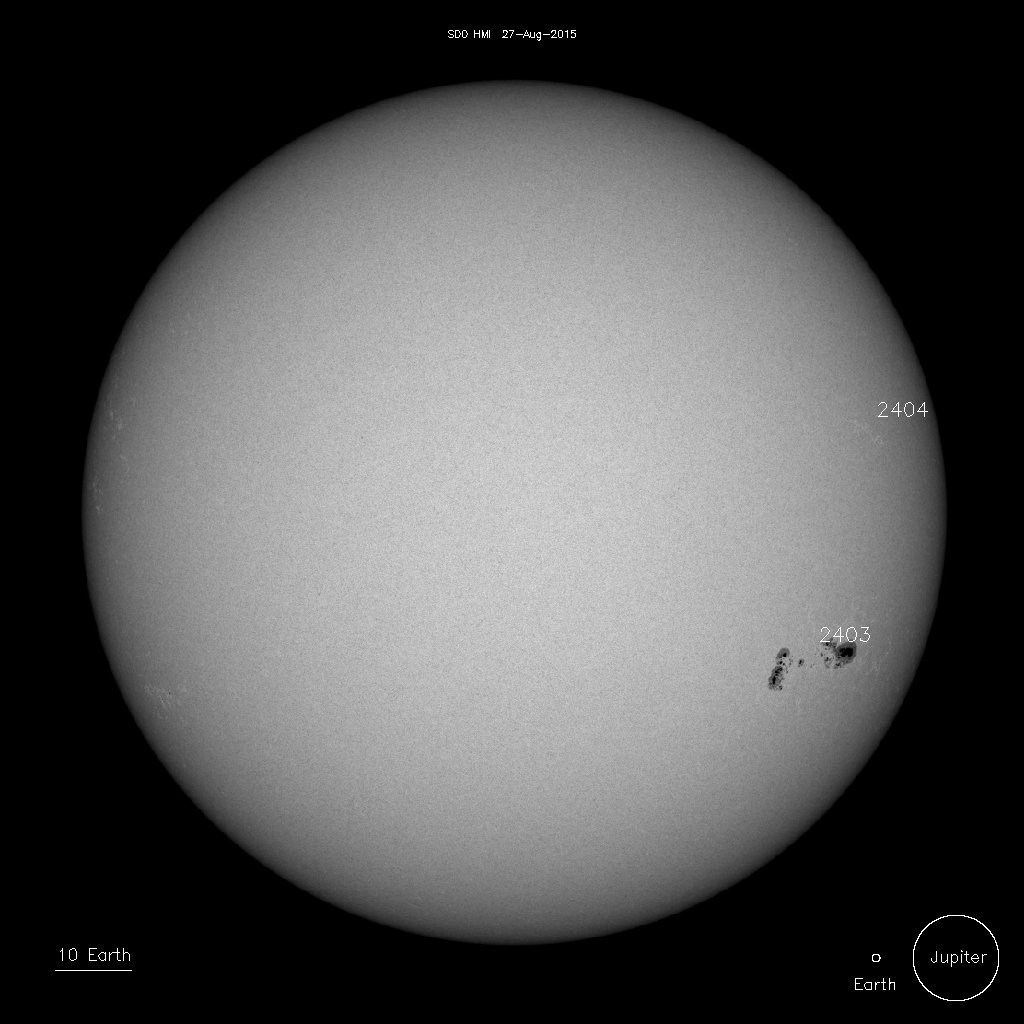
Sunspots on August 27, 2015. Image credit: NASA SDO/HMI.
Featured image: NASA SDO/AIA 131 August 27, 2015 at 05:45 UTC – M2.9 solar flare.

Commenting rules and guidelines
We value the thoughts and opinions of our readers and welcome healthy discussions on our website. In order to maintain a respectful and positive community, we ask that all commenters follow these rules.